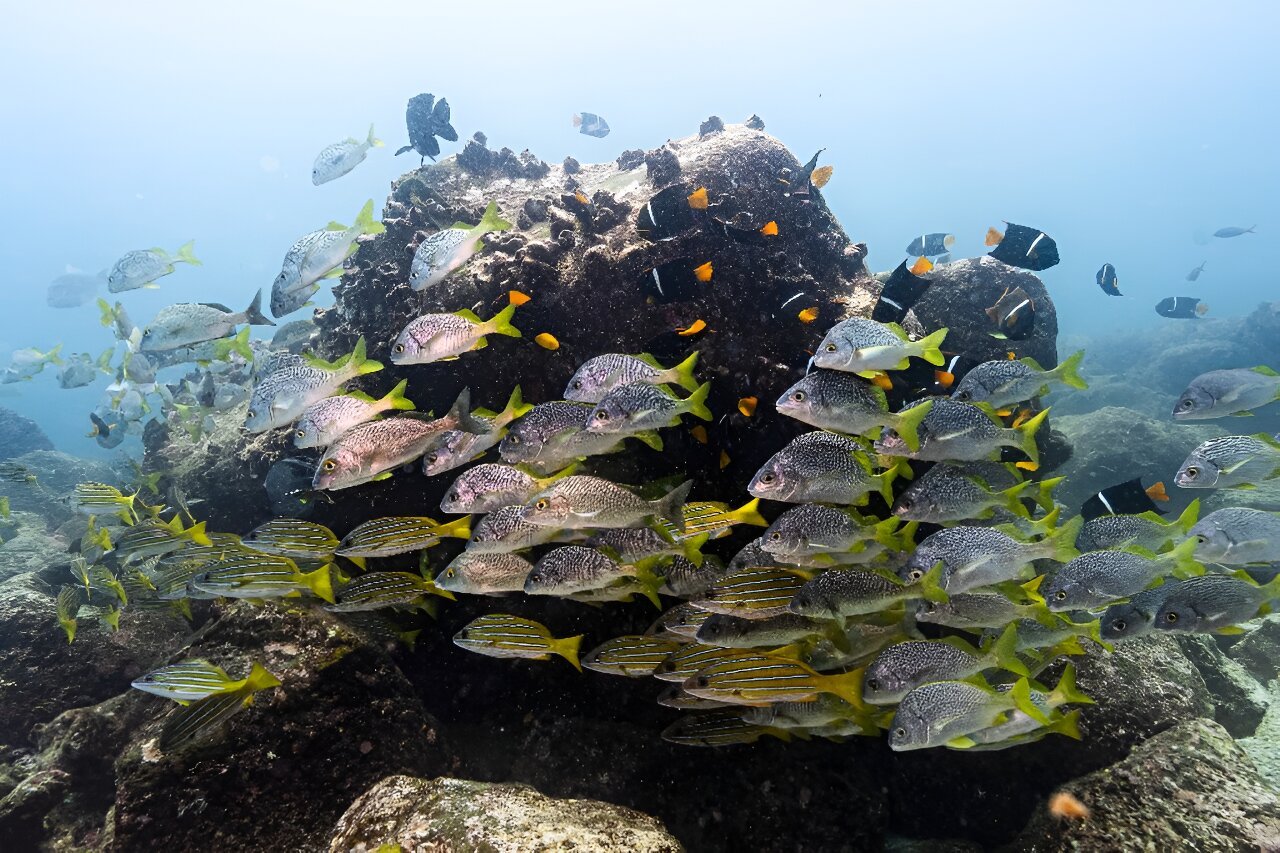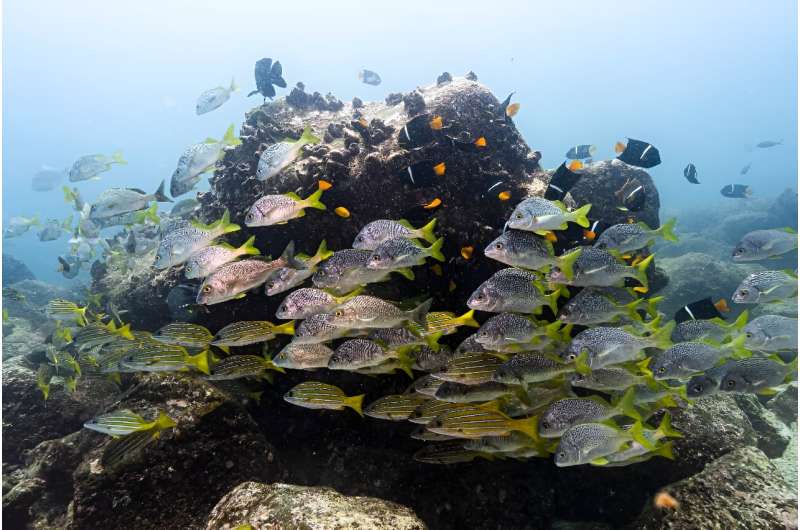

Greenpeace on Monday urged governments to ratify a UN treaty for ocean protection to allow for the creation of a world-first marine preservation area in the high seas around Ecuador’s famous Galapagos archipelago.
“We must protect this area” with its unique fauna and flora where “industrial fishing fleets continue to plunder the oceans,” Ruth Ramos of the Greenpeace Protect the Oceans campaign said in a statement.
This could become the first-ever marine protected area created under the so-called High Seas Treaty adopted by United Nations member states last June to protect marine ecosystems that are vital to humanity but under threat from pollution, the environmental campaign NGO said.
The treaty was adopted after more than 15 years of discussions to extend environmental protections to international waters which make up more than 60 percent of the world’s oceans.
It can go into effect 120 days after being ratified by 60 countriesâa goal activists hope to reach by 2025.
So far it has been signed by several dozen states but ratified by only two: Palau and Chile.
“This historic treaty, once ratified, will enable us to protect a vast area of international waters near the Galapagos Islands, safeguarding a vital migratory superhighway for marine life such as sharks and turtles,” said Ramos, who was taking part in a scientific expedition to the area.
The Galapagos islands, some 1,000 kilometers (600 miles) off the mainland of Ecuador, have flora and fauna found nowhere else in the world.
Observing its wonders led British scientist Charles Darwin to develop his ground-breaking theory of evolution by natural selection in the 19th century.
Ramos said the governments of Ecuador, Panama, Colombia and Costa Rica have taken “admirable steps” to protect the oceans in their national waters.”
Under the treaty, “they now have a historic opportunity to demonstrate global leadership by protecting this key area of the high seas and further safeguarding the beauty and biodiversity of the Galapagos region for future generations.”
A high seas marine protected area in the region “would remove the threat of industrial fishing fleets,” said Greenpeace.
“It would also protect a key area of ocean that many threatened migratory species from Galapagos and adjacent marine regions must cross in order to reach key coastal habitats for pupping, nesting and feeding.”
© 2024 AFP
Citation:
Greenpeace urges creation of Galapagos high seas protected area (2024, March 11)
retrieved 11 March 2024
from https://phys.org/news/2024-03-greenpeace-urges-creation-galapagos-high.html
This document is subject to copyright. Apart from any fair dealing for the purpose of private study or research, no
part may be reproduced without the written permission. The content is provided for information purposes only.

